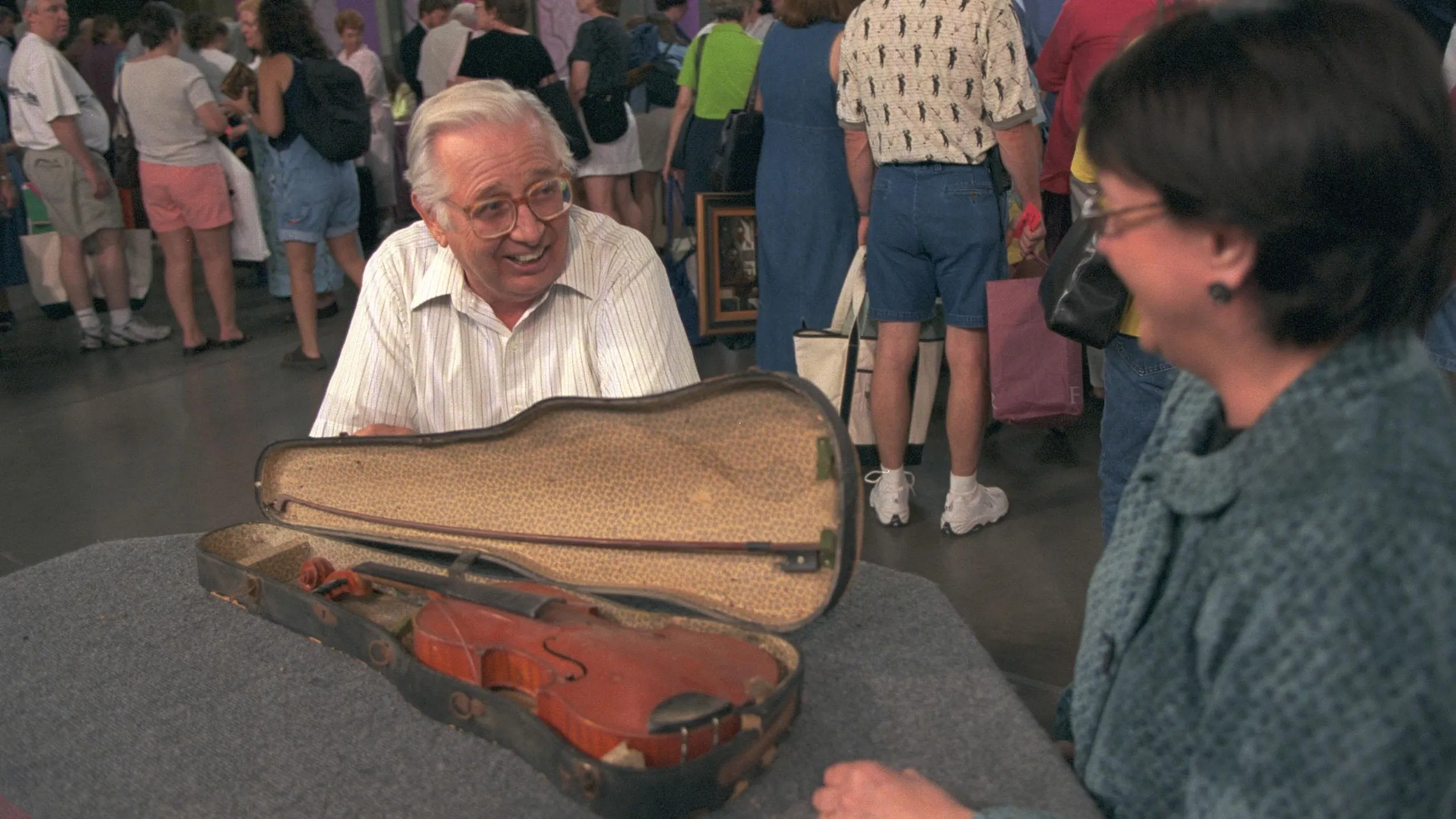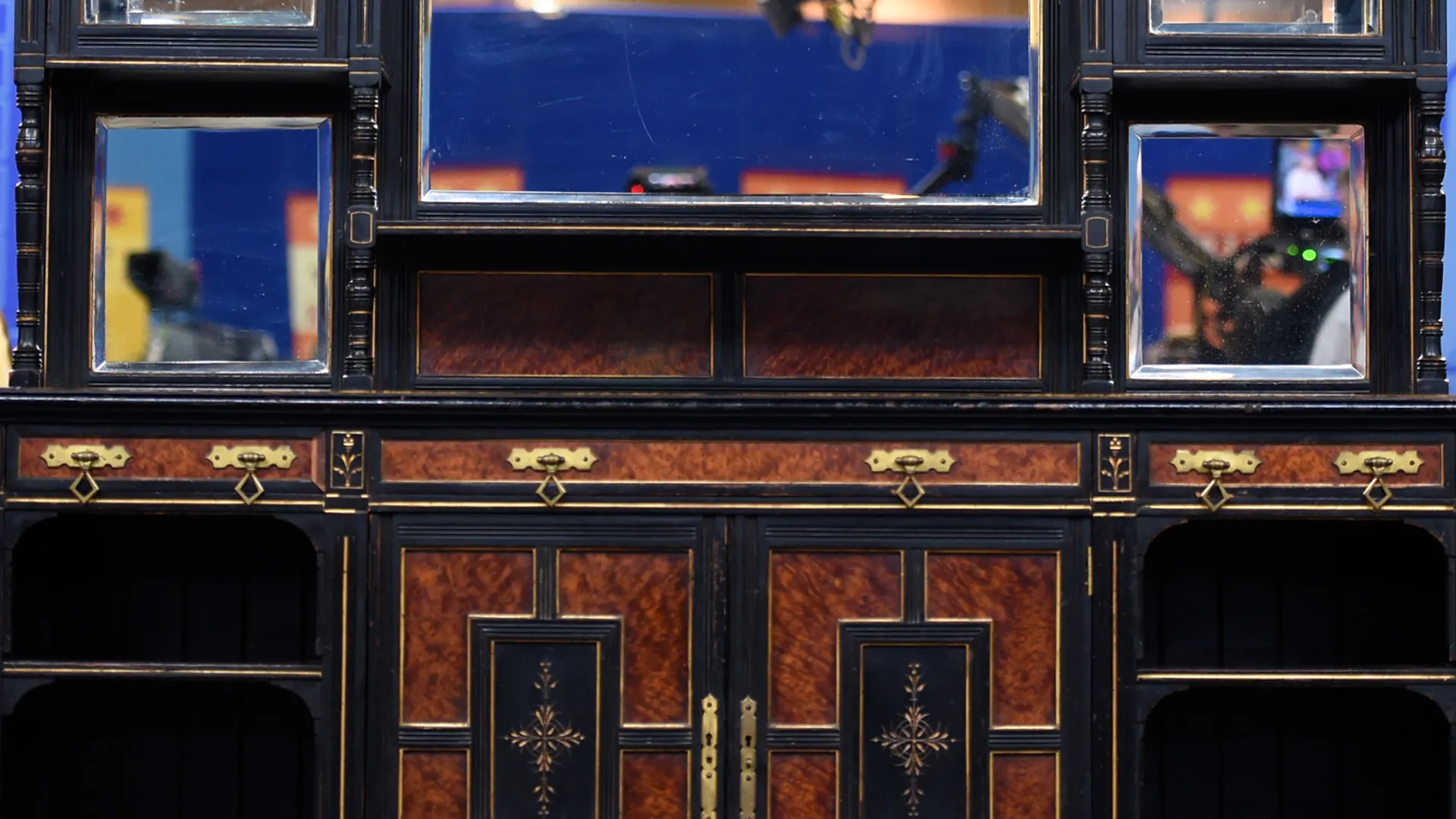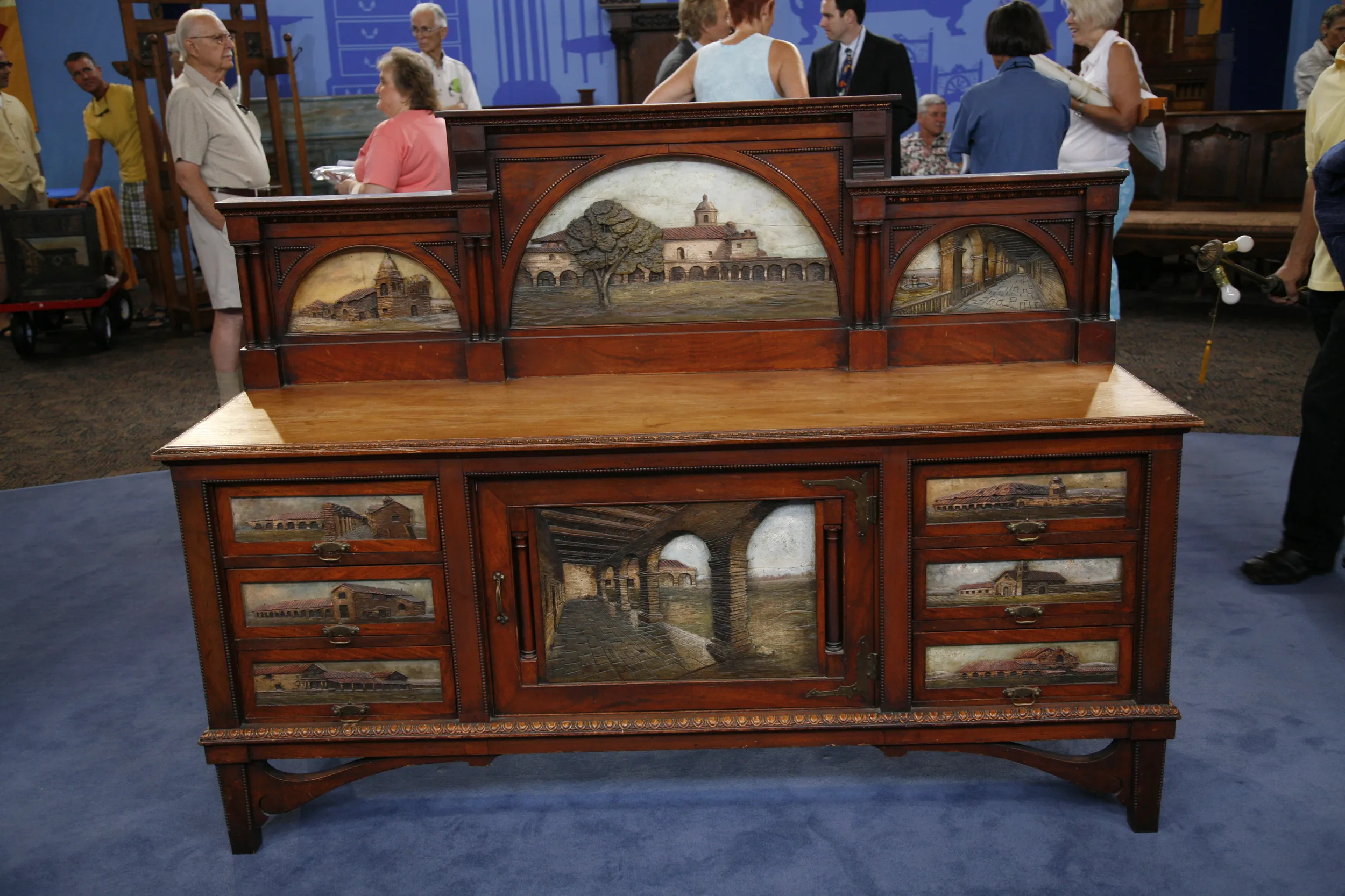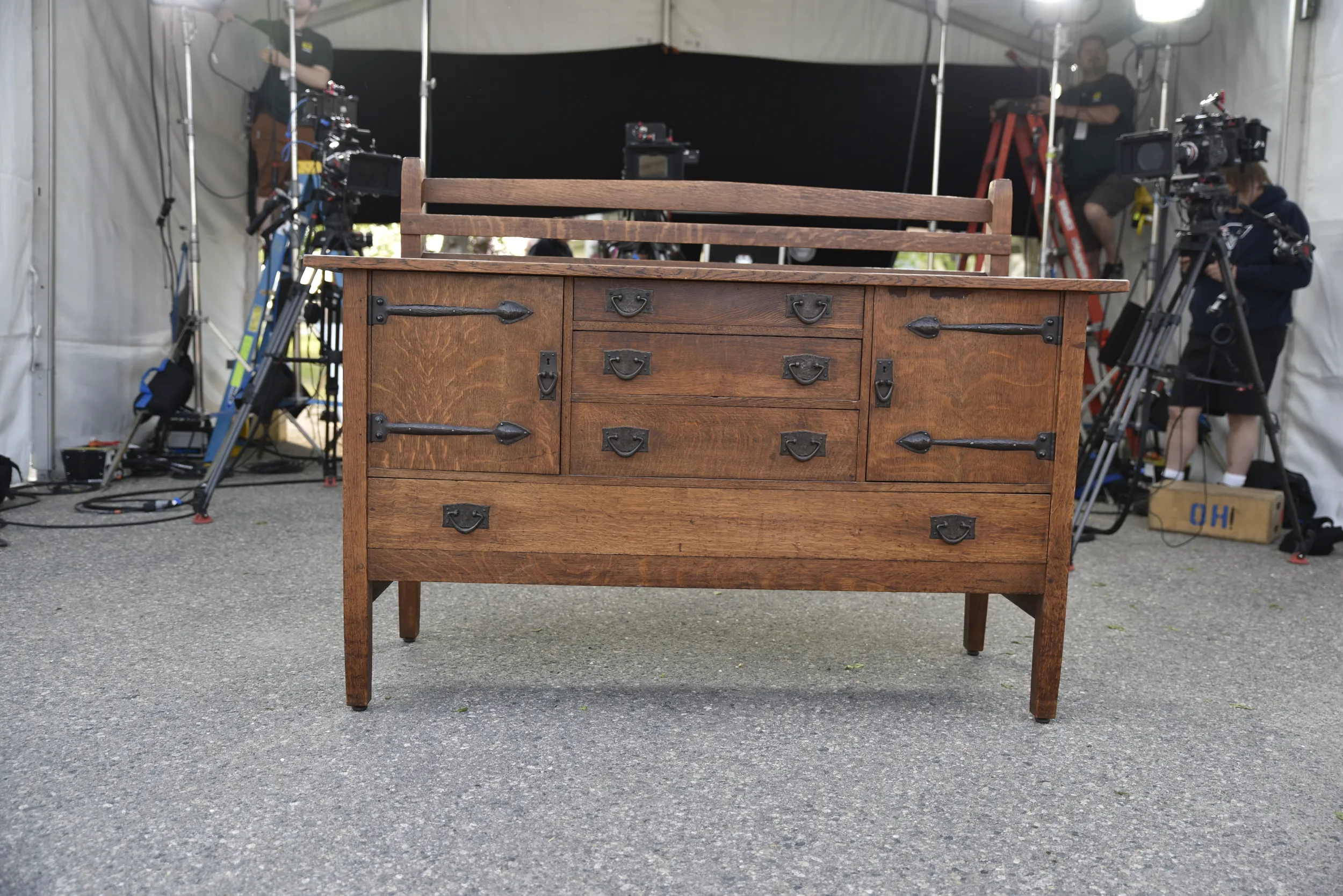New York Federal Sideboard, ca. 1790
APPRAISER: You brought in this sideboard, right?
GUEST: Right.
APPRAISER: Owned by your great-great-great...
GUEST: Many times removed.
APPRAISER: Many times removed grandfather.
GUEST: Right.
APPRAISER: And his picture is here, right?
GUEST: Yes.
APPRAISER: And he lived to be 91 years old, I understand.
GUEST: 91.
APPRAISER: And you're 90... If I may say...
GUEST: I'm 92.
APPRAISER: You're 92, so it runs in the family, this longevity.
GUEST: Well, it does.
APPRAISER: You're… you’re only on your first 92, though, right?
GUEST: Yeah.
APPRAISER: You’ve got 92 more—
GUEST: I think so.
APPRAISER: Well, it's really, it's an honor when we Roadshow appraisers get a chance to talk about a piece that's never left the family, owned by the direct descendant. You've taken really nice, nice care of it. I have to tell you, when Captain
John Bogart, back in 1790, I'd say-- he would have been in his 30s, right?-- went into a store in New York, a cabinetmaker's shop...I’m just thinking about this…
GUEST: I guess so.
APPRAISER: …to order a sideboard, it would have been like ordering a car. He would have gone in and said, "I want all the bells and whistles. "I want all the extras. I want
the sunroof, I want the FM radio, the heated steering wheel."
GUEST: (laughing)
APPRAISER: "I want the whole thing."
GUEST: Yeah.
APPRAISER: Because this sideboard is the best that you really could have ordered, pretty much, in 1790.
GUEST: I guess so.
APPRAISER: It's really a masterpiece in terms of design.
GUEST: Right.
APPRAISER: It's got this beautiful two-board top. The wood is incredible, and if you look at what makes a masterpiece, overall design... you've got this beautiful S-curve, these drawers that are all inlaid with this tombstone motif, and…
GUEST: Right.
APPRAISER: It's also down here on the doors, and this design actually repeats itself. You can see on the top of the sideboard.
GUEST: Right.
APPRAISER: You see this curve and straight?
GUEST: Right.
APPRAISER: So it's repeated here and here. And when you come down here, you have this beautiful mahogany, the original brasses. I love this stringing that comes down the leg…
GUEST: Right.
APPRAISER: …and I love all these cuffs. It's really a symphony of – of Federal furniture design. It really gets – gets my juices flowing, and yours - yours too, you said—you love it.
GUEST: I love it. That's why I kept it, and that's why I kept it in shape.
APPRAISER: All these years. And you said that back in 1930, Israel Sack came to your house. Can you tell us...?
GUEST: Israel Sack…
APPRAISER: Right.
GUEST: …came to our house…
APPRAISER: Yes.
GUEST: …to... and at the time, we were pretty hard up for money.
APPRAISER: Right, back in the 1930s.
GUEST: And we were thinking of selling it, but he said, "It's a fine piece of furniture,
but there's no market for it."
APPRAISER: Well, it was 1930, so it was a tough time.
GUEST: 1930.
APPRAISER: People...
GUEST: But he said…
APPRAISER: …the Depression.
GUEST: …uh, "If you could sell it, you probably could get $2,500 for it."
APPRAISER: $2,500, which was - was a fair amount of money in 1930 but--
GUEST: In 1930, that was a lot of money.
APPRAISER: He was right, sideboards weren't that popular then, but today, sideboards are very popular.
GUEST: Okay.
APPRAISER: And I have to mention the fact that this has been cleaned and refinished, and you did all the work, right?
GUEST: Yup.
APPRAISER: It doesn't affect its value. It doesn't decrease the value like it does with earlier Chippendale furniture, where, you know how you watch on the Roadshow...
GUEST: Yeah, yeah, yeah.
APPRAISER: You clean off the grunge, and it's not worth much. On this piece, it really... you did a beautiful job. I know that you repaired some of these small sections.
GUEST: Yeah.
APPRAISER: You did repair the cuffs that were missing,…
GUEST: Yeah.
APPRAISER: And I know that you did mention that-- and I have to mention this-- that during a move, somebody broke the back leg, and that happens, sadly, and you had to replace it, but you did a beautiful job.
GUEST: Thank you.
APPRAISER: Let me tell you, I had a piece like this in my shop in perfect condition that I sold about two years ago for $125,000, okay, in perfect condition.
GUEST: Right, right, right.
APPRAISER: Does that surprise you?
GUEST: No, not at all.
APPRAISER: Becau... good. (chuckles) Now, this piece, because it does have that repair to the leg-- and that's something that happened, it was beyond your control, and you did a nice job fixing it-- but because it is replaced, it would pretty much take the value of this in half-- down around $60,000 or so-- but that's because collectors today like to have all the original parts.
GUEST: I'm – I’m pleased.
APPRAISER: Well, thank you for bringing it.
GUEST: Thank you.
APPRAISER: It's a wonderful piece of American history, and it's an honor.
GUEST: I'm glad you had a chance to give me all this information.
APPRAISER: Well, thank you. Now you can take care of it for another 91 years, right?
GUEST: Well, somebody might.
APPRAISER: Okay, no, you will.

$30,000 Retail
$60,000 Retail
Tucson, AZ (2001)
Featured In

episode
Vintage Tucson (2016)
Discover how values from 2001 hold up in today’s market. Revisit a fan-favorite appraisal.
Sideboard

appraisal

appraisal

appraisal
Understanding Our Appraisals
Placeholder






